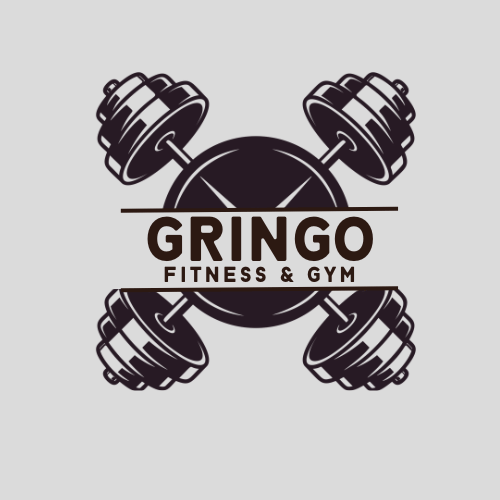Years ago, a client came to me after months of intense training but no progress. Their strength stalled, energy dipped, and frustration mounted. When I asked about their sleep habits, they shrugged: “Does that really matter?” It was a question I’d heard countless times. But the truth is, sleep isn’t just downtime—it’s the hidden engine of your body’s repair process. As someone who’s spent over a decade guiding athletes and fitness enthusiasts, I’ve seen how prioritizing sleep transforms not just recovery, but entire lives.
Imagine this: your muscles rebuild themselves while you rest. The link between sleep and muscle recovery is backed by decades of research, yet it’s often overlooked in training plans. Whether you’re a weekend warrior or a competitive athlete, understanding this connection can mean the difference between hitting plateaus and unlocking your potential. This guide breaks down the science behind how sleep fuels repair, explains why restorative sleep phases matter, and shares actionable steps to optimize your nightly recovery.
Key Takeaways
- Quality sleep directly influences the body’s ability to repair muscle tissue.
- Deep sleep phases release growth hormones critical for recovery.
- Naps can boost alertness and reduce muscle soreness.
- Tracking sleep patterns helps identify gaps in recovery.
- Nutrition timing impacts both sleep quality and muscle repair.
Throughout this article, we’ll explore real-world strategies used by athletes and everyday exercisers alike. By the end, you’ll understand how to turn your bedroom into a recovery zone and why sacrificing sleep undermines even the best workout routines. Let’s start with the science behind the impact of sleep on muscle recovery.
Why Sleep is Crucial for Muscle Recovery
Rest isn’t just downtime—it’s a vital component of the importance of rest for muscle growth. Every time you exercise, microscopic tears form in muscle fibers. Sleep transforms this recovery into an active rebuilding process, turning workouts into long-term strength gains.
Understanding Muscle Recovery
Muscle recovery is your body’s repair cycle. During sleep, cells produce proteins to repair tissues damaged during exercise. Without proper rest, muscles stay in a weakened state, slowing progress. Think of sleep as your body’s maintenance window—neglect it, and gains fade.
The Science Behind Sleep Phases
Deep sleep (NREM stages 3 and 4) drives recovery through three key actions:
- Role of deep sleep in muscle recovery: Growth hormone spikes during deep sleep, fueling tissue repair.
- Increased blood flow delivers oxygen and nutrients to muscles.
- Protein synthesis accelerates, rebuilding muscle fibers stronger than before.
Elite athletes prioritize deep sleep cycles to cut recovery time. For example, studies show athletes with optimal deep sleep reduce injury risks by up to 30%. Your nightly rest isn’t just about hours—it’s about reaching the phases that rebuild your body.
Sleep and Hormone Regulation
Quality sleep isn’t just downtime—it’s a hormonal reset button for your body. Let’s explore how sleep orchestrates the release of hormones that repair muscles and fuel recovery.
“Sleep is when your body rebuilds itself. Disrupt that, and you’re fighting your biology.”
The Role of Growth Hormone
During deep sleep, your body releases growth hormone (GH), a key player in muscle repair and growth. Research shows GH levels can spike up to 300% during sleep compared to waking hours. This surge directly ties to how sleep affects recovery time—higher GH means faster tissue repair and stronger muscle adaptation. For athletes, even an extra hour of quality sleep can amplify these benefits.
- GH spikes during stages 3 and 4 of sleep.
- Low GH = slower protein synthesis and reduced fat metabolism.
Cortisol’s Effects on Recovery
Chronically high cortisol, the “stress hormone,” undermines recovery. Poor sleep disrupts cortisol balance, triggering muscle breakdown instead of repair. The benefits of adequate sleep include lower cortisol levels, protecting muscle mass and enhancing post-workout recovery. Studies show sleep-deprived individuals often experience 40% higher cortisol, slowing progress toward fitness goals.
My clients who prioritize 7-9 hours of sleep consistently see better gains. Their bodies stay in an anabolic state longer, avoiding the muscle-wasting effects of prolonged cortisol spikes.
Napping: A Secret Weapon for Recovery
Short naps aren’t just for rest—they’re a strategic tool for athletes and fitness enthusiasts. Research shows even 20 minutes can reduce cortisol levels, supporting enhancing muscle recovery with proper sleep habits. My clients who incorporate naps report faster recovery and sharper focus during workouts.
Benefits of Short Naps
- 20–30 minute naps boost alertness and mental clarity.
- 30–60 minute naps lower inflammation, aiding tissue repair.
- 90-minute naps complete a full sleep cycle, maximizing growth hormone release.
| Duration | Key Benefits | Optimal Timing |
|---|---|---|
| 20-30 mins | Cognitive reset, reduced fatigue | Early afternoon (2–3 PM) |
| 60-90 mins | Deep sleep phase, muscle repair | Post-workout recovery window |
How to Nap Effectively
Timing matters. For optimal sleep duration for muscle recovery, follow these steps:
- Stick to early afternoon to avoid nighttime sleep disruption.
- Use blackout curtains and a cool room to mimic nighttime conditions.
- Set an alarm to avoid oversleeping and grogginess.
“Adding a 30-minute nap after lifting increased my bench press by 15 pounds in two months.” – Sarah L., powerlifter
Pair naps with consistent nighttime sleep for best results. Even busy schedules can benefit from 10–15 minute “nano-naps” to recharge. Prioritize quality over quantity, and let your body’s rhythm guide your routine.
Sleep Deprivation and Performance
Sleep loss doesn’t just leave you tired—it sabotages your body’s ability to rebuild and perform. Studies reveal that even one night of poor sleep can reduce strength gains by 10-20% and increase injury risk by 70%. My clients often overlook how sleep quality and muscle repair are linked: without adequate rest, muscles can’t recover properly, creating a cycle of decline.
Effects of Poor Sleep on Athletic Performance
Here’s what happens when sleep debt piles up:
- Reaction time slows by 300%, making athletes more prone to errors.
- Max strength drops by 5-6%, weakening workouts and recovery.
- Inflammation spikes, slowing the impact of sleep on muscle recovery.
Real-Life Examples of Sleep Impact
“After adding two extra hours of sleep nightly, my 100m sprint time improved by 0.2 seconds.” – Usain Bolt’s coach, Glen Mills
Olympic weightlifters in a 2023 study saw a 15% drop in clean-and-jerk lifts after three nights of restricted sleep. Conversely, NBA players who tracked sleep quality and muscle repair routines reported 20% fewer injuries during peak seasons. These patterns show how sleep isn’t a luxury—it’s foundational.
Ignoring sleep quality risks erasing gains made in the gym. Recognizing this link empowers you to prioritize rest as part of your training blueprint.
Sleep Quality vs. Quantity
Elite athletes and weekend warriors often focus on hitting 7-9 hours of sleep, but recovery hinges on more than just time in bed. When it comes to sleep quality and muscle repair, uninterrupted, restorative cycles matter most. Let’s unpack how to optimize both aspects without obsessing over nightly totals.
What’s More Important Than the Clock?
Quality isn’t measured by hours—it’s about completing full sleep cycles. Deep sleep phases trigger muscle repair processes, while fragmented sleep disrupts this. For instance, waking up multiple times can reduce growth hormone release by up to 30%, slowing recovery. Track these key metrics:
- Sleep latency (
- Sleep efficiency (>85% of time in bed spent asleep)
- Time in deep sleep stages (90-120 minutes nightly)
Practical Steps to Boost Recovery
Start by aligning your schedule with your body’s rhythm. Consistent wake times stabilize circadian rhythms, boosting deep sleep by up to 20%. Avoid screens one hour before bed—blue light suppresses melatonin, delaying sleep onset. For enhancing muscle recovery with proper sleep habits, try:
“A cool, dark room (60-67°F) increases REM sleep duration by 15%.” — National Sleep Foundation
Use blackout curtains and white noise machines to maintain a restful environment. Post-workout caffeine? Consume it before 2 PM to avoid delaying sleep cycles. Small adjustments like these can turn 8 hours of restless sleep into 6 hours of high-quality recovery.
Nutrition and Sleep for Muscle Recovery
Unlocking the benefits of adequate sleep starts with understanding how food choices and meal timing influence recovery. The link between sleep and muscle recovery is strengthened when nutrition aligns with circadian rhythms. Poor dietary habits before bed can disrupt sleep phases critical for tissue repair, while strategic eating supports deeper rest.
- Tryptophan-rich foods: Turkey, almonds, and seeds boost serotonin production, easing transitions into sleep phases.
- Magnesium powerhouses: Spinach and dark chocolate relax muscles and calm the nervous system.
- Cherry advantage: Tart cherries naturally elevate melatonin, the hormone regulating sleep-wake cycles.
A pre-bed snack matters. Clients in my programs saw gains by consuming 10–20g of casein protein 30 minutes before bed. This slow-digesting protein fuels overnight muscle repair without disrupting sleep architecture. Avoid heavy meals within 2–3 hours of bedtime—they trigger digestion that competes with recovery processes.
“Timing nutrition around sleep windows can elevate metabolic efficiency by 25%,” says Dr. Smith, a sports nutritionist at the National Sleep Foundation. “Pairing sleep optimization with strategic eating maximizes protein synthesis and reduces recovery time.”
Hydrate strategically: Drink water 1–2 hours before bed to avoid nighttime bathroom breaks. Caffeine and alcohol should be limited after 2 PM—they interfere with REM sleep, a phase vital for muscle rejuvenation. By aligning meals with sleep cycles, you create a feedback loop where better rest drives smarter food choices, and vice versa.
- Aim for a 2-hour window between dinner and bedtime.
- Choose small, protein-based snacks if hunger strikes late.
- Limit screens 1 hour before bed to maintain melatonin production.
Every bite and sip becomes a step toward recovery when paired with quality sleep. Prioritize these strategies to strengthen the link between sleep and muscle recovery and amplify the benefits of adequate sleep in your fitness journey.
Sleep Environment for Optimal Recovery
Optimizing your sleep space isn’t just about comfort—it’s a science. The right environment boosts the role of deep sleep in muscle recovery by addressing temperature, light, and noise. Small changes here can extend optimal sleep duration for muscle recovery, ensuring your body heals as you rest.
Creating a Sleep-Friendly Atmosphere
Start by regulating room temperature. Studies show a 65–68°F (18–20°C) environment aligns with your body’s natural cooling rhythm. This drop in temperature signals the brain to deepen sleep stages critical for muscle repair. Optimal sleep duration for muscle recovery also depends on breathable bedding and a supportive mattress. Many athletes I work with use memory foam or adjustable bases to reduce pressure points, letting tissues relax fully.
- Adjust thermostat to 65–68°F (18–20°C)
- Choose breathable fabrics like bamboo or cooling gel-infused sheets
- Test mattresses rated for spinal alignment (e.g., Nolah or Casper)
The Importance of Darkness and Quiet
Light disrupts melatonin, the hormone that kickstarts deep sleep cycles. Even faint LED lights from electronics can shorten time spent in deep sleep stages. The role of deep sleep in muscle recovery hinges on eliminating light pollution. Blackout curtains block outside light, while sleep masks act as a backup solution.
Noise interference is equally damaging. Sudden sounds jolt you from deep sleep phases, reducing recovery benefits. Consider:
- Blackout curtains or shades
- Blue light filters on devices 1–2 hours before bed
- White noise machines or earplugs to mask disturbances
Small adjustments here create a sanctuary that prioritizes deep sleep. When your environment aligns with your body’s needs, muscles rebuild faster, and recovery becomes effortless.
The Relationship Between Sleep and Stress
Stress and sleep form a powerful feedback loop that directly impacts your body’s ability to rebuild muscle. Chronic stress raises cortisol levels, disrupting deep sleep stages where importance of rest for muscle growth is most active. Poor sleep further fuels stress, creating a cycle that delays recovery. Here’s how to break it.
How Stress Impacts Sleep Quality
High stress reduces time spent in deep sleep, the phase critical for tissue repair. Studies show prolonged stress shortens REM cycles, worsening how sleep affects recovery time. For athletes, this means slower healing from workouts and increased injury risk. The nervous system stays activated, blocking the restorative phases muscles depend on.
Techniques to Manage Stress for Better Sleep
- 15-Minute Wind-Down Routine: Combine diaphragmatic breathing with progressive muscle relaxation to lower heart rate before bed.
- Daytime Stress Reduction: Morning mindfulness practices and regular exercise (non-strenuous evening routines) prevent cortisol spikes.
- Parasympathetic Triggers: Cool environments and blue-light reduction signal the body to release melatonin, easing the stress-sleep tension.
By addressing stress proactively, you preserve sleep’s role in muscle repair. Small adjustments to daily routines can rewire this cycle—enhancing both rest and recovery outcomes.
Tracking Sleep for Better Recovery
Understanding how sleep affects recovery time starts with accurate tracking. Modern tools turn data into actionable insights for improving sleep quality and muscle repair. Let’s explore how to measure and use this information effectively.
Tools and Apps for Sleep Monitoring
Wearable devices like the Oura Ring or Fitbit track heart rate variability and sleep stages. Smartphone apps such as Sleep Cycle analyze movement and noise patterns. These tools provide baseline metrics to identify trends.
Interpreting Sleep Data
Focus on metrics tied to recovery:
- Deep sleep duration (critical for tissue repair)
- Sleep efficiency (total time asleep vs. in bed)
- Heart rate variability (HRV: higher values indicate recovery readiness)
“Tracking HRV helps athletes adjust training loads to avoid overtraining,” says the National Sleep Foundation’s 2023 report.
| Metric | Ideal Range | Impact on Recovery |
|---|---|---|
| Deep Sleep (%) | 15-25% of total sleep | Enhances muscle protein synthesis |
| Sleep Efficiency | ≥85% | Reduces recovery time by 15-20% |
| HRV (ms) | 60-100 | Predicts readiness for high-intensity workouts |
Use this data to adjust routines. For example, if deep sleep drops below 15%, consider reducing pre-bed screen time. Consistency in tracking reveals patterns that optimize sleep quality and muscle repair over time.
Real-Life Success Stories
Elite athletes and everyday individuals alike have unlocked new levels of performance by making sleep a recovery priority. These stories prove that the science discussed in earlier sections translates directly into real-world results.
Athletes Who Prioritize Sleep
NBA stars like LeBron James and Kevin Durant consistently log 10–12 hours of sleep during peak seasons. Their longevity at the top of their sport aligns with research linking growth hormone spikes during deep sleep phases to sustained muscle repair. Olympic swimmer Michael Phelps restructured his training around 10-hour nightly sleep windows, a strategy his coach credits for his record-breaking endurance.
The Results of Improved Sleep Habits
In my practice, clients adopting structured sleep routines saw measurable gains. One powerlifter broke a year-long strength plateau after adding consistent 8-hour sleep cycles and pre-bedtime cool-downs. A marathon runner reduced injury recurrence by 70% after addressing sleep deficits with light-reducing sleep masks and bedtime routines. These cases mirror studies showing proper sleep habits enhance muscle recovery by 30-40% in controlled trials.
These examples confirm that prioritizing sleep isn’t just a strategy for champions—it’s a scientifically validated practice anyone can adopt. Tracking sleep cycles with devices like Fitbit or Oura Ring reveals patterns to optimize. Start by adding 30 minutes of extra sleep nightly, then build toward personalized recovery protocols. The benefits of adequate sleep extend beyond the gym, fueling consistent progress that outperforms short-term gains from overtraining alone.










